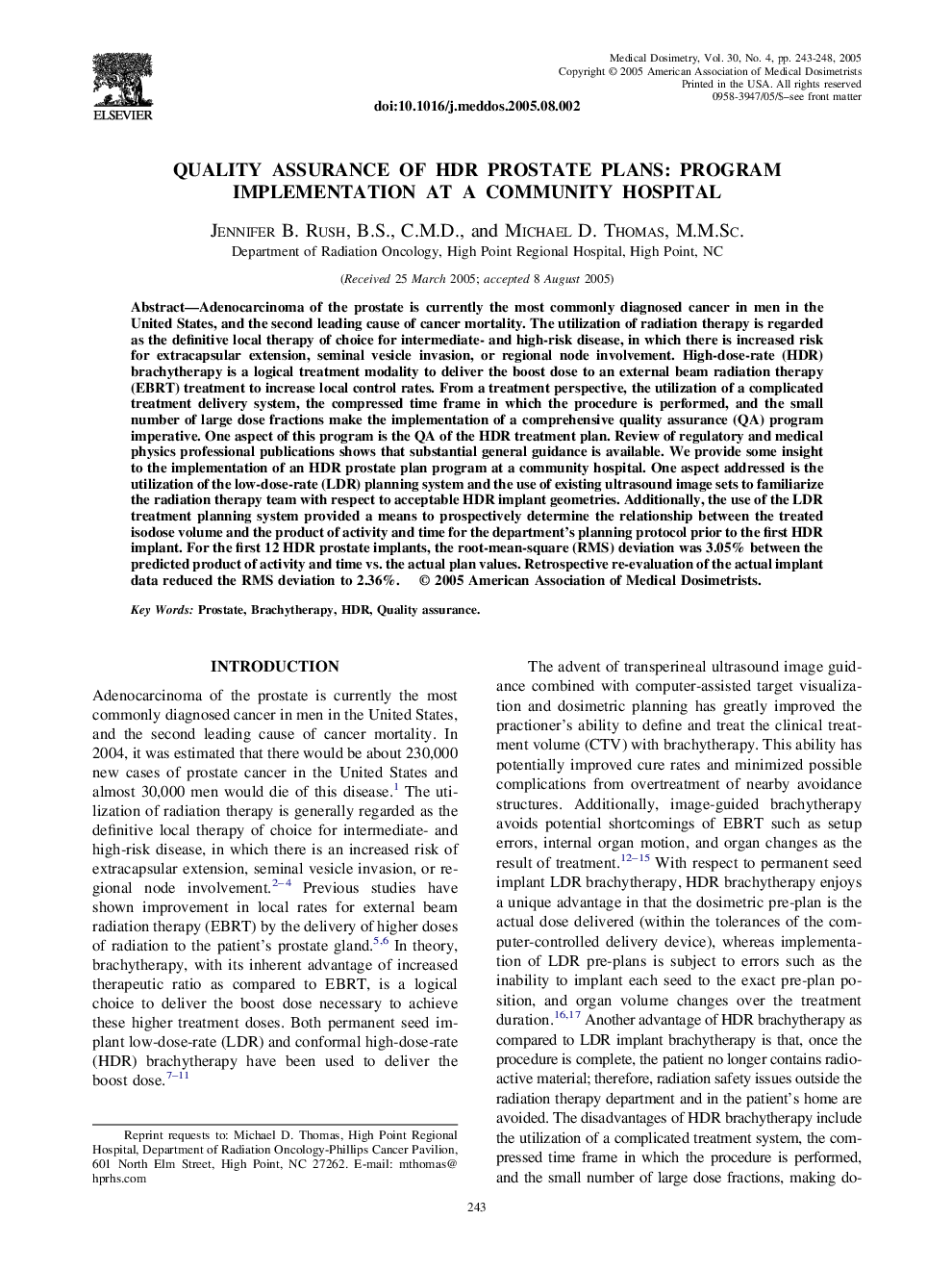| کد مقاله | کد نشریه | سال انتشار | مقاله انگلیسی | نسخه تمام متن |
|---|---|---|---|---|
| 9875866 | 1533331 | 2005 | 6 صفحه PDF | دانلود رایگان |
عنوان انگلیسی مقاله ISI
Quality assurance of HDR prostate plans: Program implementation at a community hospital
دانلود مقاله + سفارش ترجمه
دانلود مقاله ISI انگلیسی
رایگان برای ایرانیان
موضوعات مرتبط
مهندسی و علوم پایه
فیزیک و نجوم
تشعشع
پیش نمایش صفحه اول مقاله

چکیده انگلیسی
Adenocarcinoma of the prostate is currently the most commonly diagnosed cancer in men in the United States, and the second leading cause of cancer mortality. The utilization of radiation therapy is regarded as the definitive local therapy of choice for intermediate- and high-risk disease, in which there is increased risk for extracapsular extension, seminal vesicle invasion, or regional node involvement. High-dose-rate (HDR) brachytherapy is a logical treatment modality to deliver the boost dose to an external beam radiation therapy (EBRT) treatment to increase local control rates. From a treatment perspective, the utilization of a complicated treatment delivery system, the compressed time frame in which the procedure is performed, and the small number of large dose fractions make the implementation of a comprehensive quality assurance (QA) program imperative. One aspect of this program is the QA of the HDR treatment plan. Review of regulatory and medical physics professional publications shows that substantial general guidance is available. We provide some insight to the implementation of an HDR prostate plan program at a community hospital. One aspect addressed is the utilization of the low-dose-rate (LDR) planning system and the use of existing ultrasound image sets to familiarize the radiation therapy team with respect to acceptable HDR implant geometries. Additionally, the use of the LDR treatment planning system provided a means to prospectively determine the relationship between the treated isodose volume and the product of activity and time for the department's planning protocol prior to the first HDR implant. For the first 12 HDR prostate implants, the root-mean-square (RMS) deviation was 3.05% between the predicted product of activity and time vs. the actual plan values. Retrospective re-evaluation of the actual implant data reduced the RMS deviation to 2.36%.
ناشر
Database: Elsevier - ScienceDirect (ساینس دایرکت)
Journal: Medical Dosimetry - Volume 30, Issue 4, Winter 2005, Pages 243-248
Journal: Medical Dosimetry - Volume 30, Issue 4, Winter 2005, Pages 243-248
نویسندگان
Jennifer B. B.S., C.M.D., Michael D. M.M.Sc.,